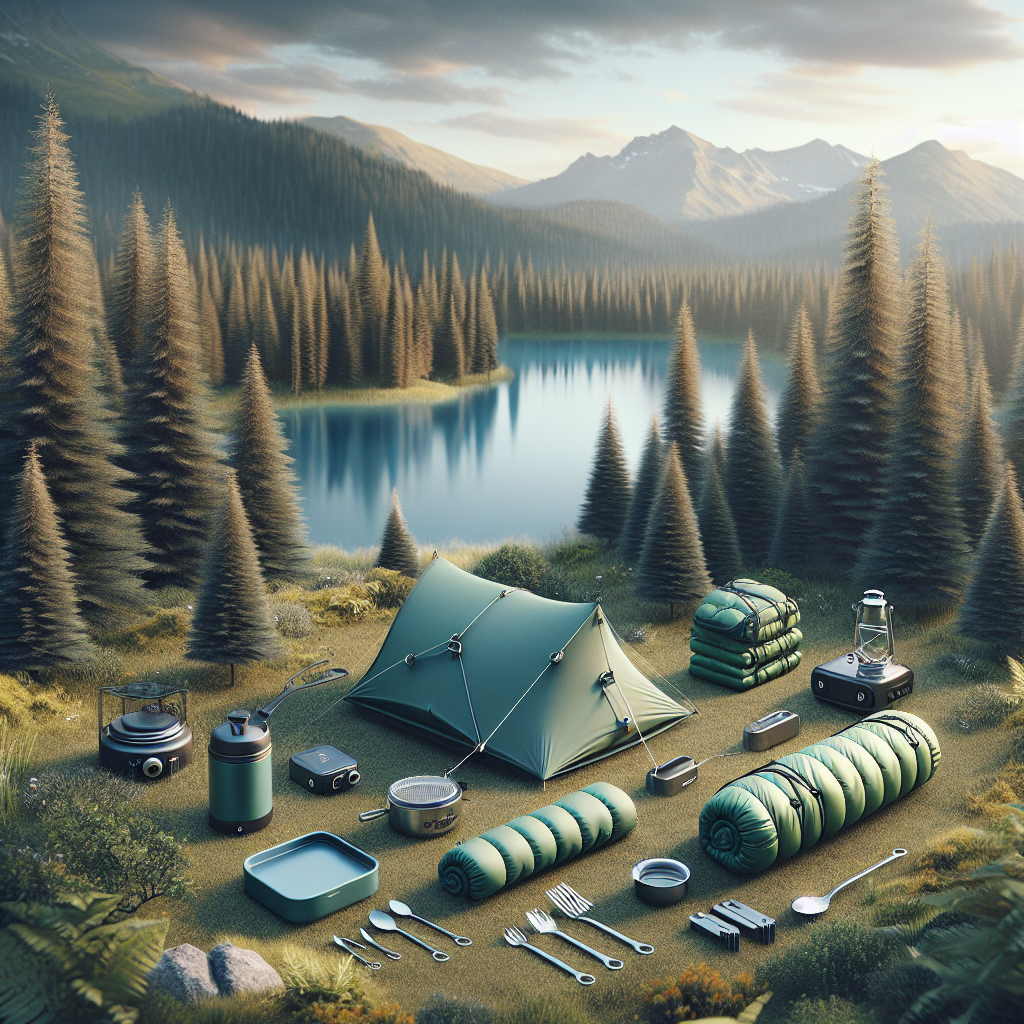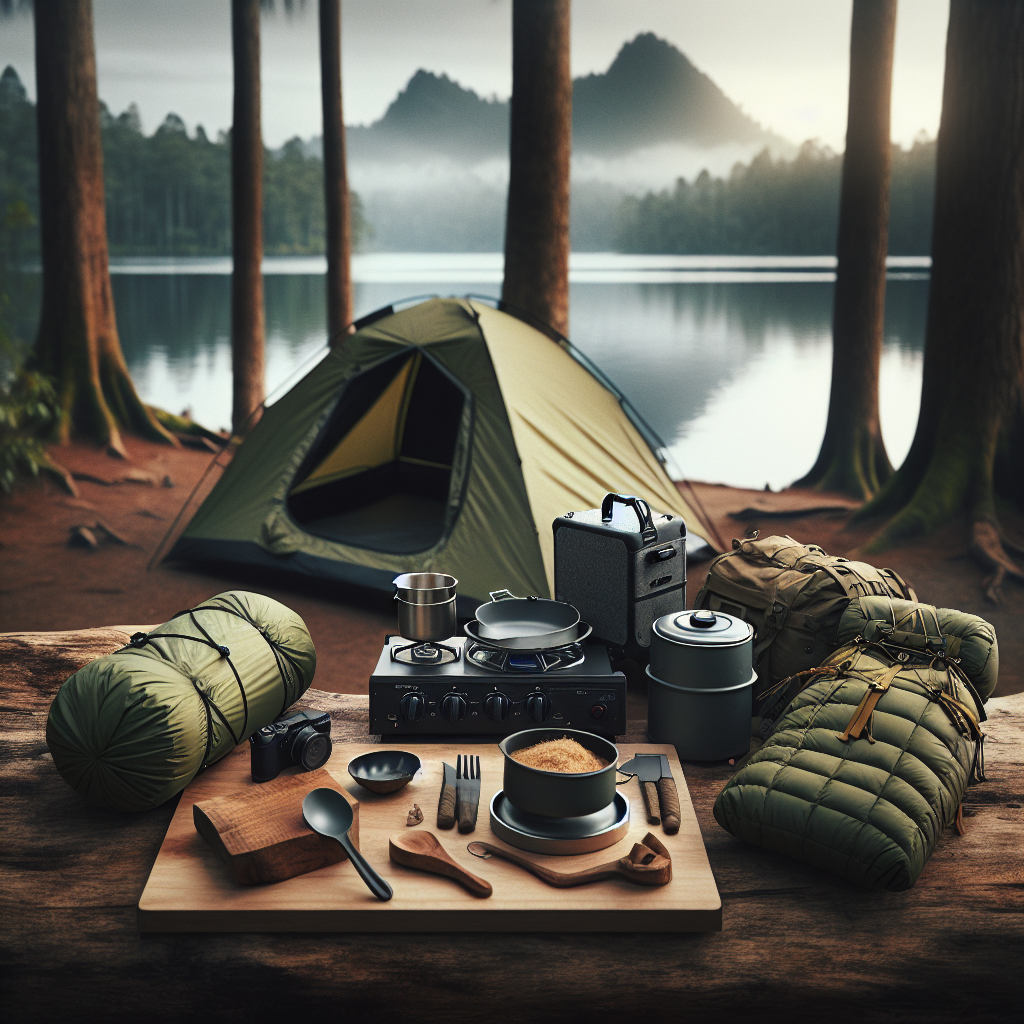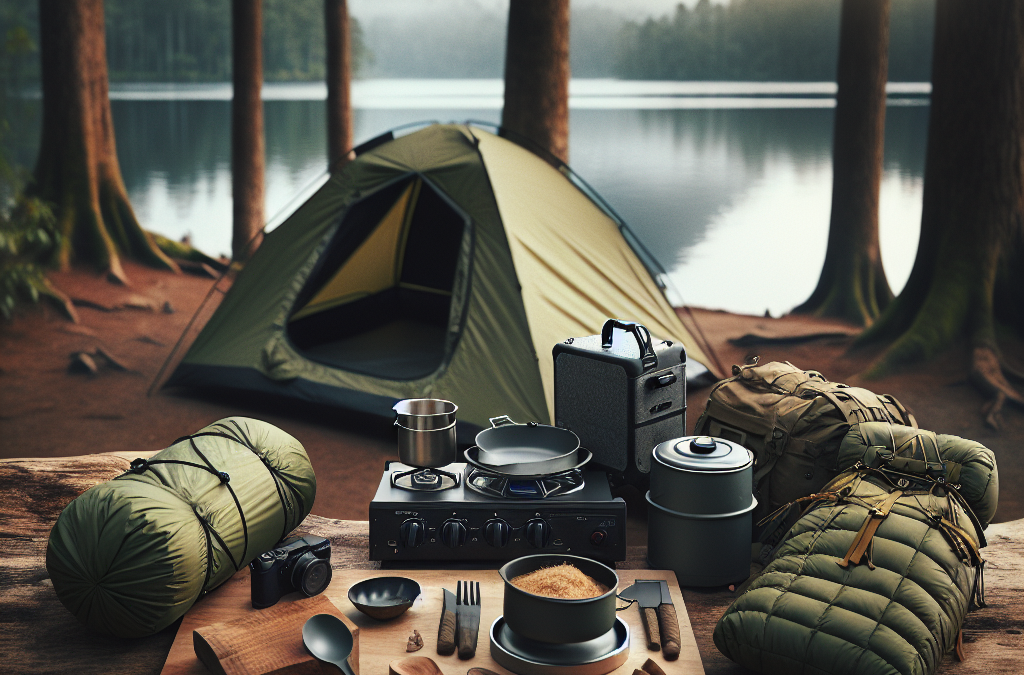As an avid camper, you understand the struggle of lugging around heavy gear on your wilderness adventures. “Lightweight Camping: Tips for Reducing Your Load” provides invaluable advice on how to minimize the weight of your camping gear without compromising on necessities. It paves the way towards making your camping trips more manageable and enjoyable. Following the guidelines, you’ll discover how simple adjustments and smart choices could reduce the strain on your shoulders and simultaneously enhance your outdoor experience. So gear up, and get ready to learn some great tips for your next trip!

Understanding Lightweight Camping
Lightweight camping is all about reducing the weight of your gear without sacrificing comfort, safety, or enjoyment. It’s a concept that demands careful planning and smart decision-making, but the payoff is great. Imagine hiking with a lighter load, covering more distance, and enjoying the beautiful outdoors without the burden of a heavy backpack. It’s a liberating concept that’s attracting an increasing number of outdoor enthusiasts.
Defining Lightweight Camping
Lightweight camping is a form of backpacking that focuses on minimizing the weight of gear taken on camping trips. Its aim is to lessen the physical challenge and increase the enjoyment of camping in the great outdoors, without sacrificing essential items. This is achieved through a combination of careful preparation, smart selection of gear and supplies, and efficient use of carried items.
Benefits of Lightweight Camping
The benefits of lightweight camping are many and varied. With less weight to carry, you’ll find hiking easier, enabling you to cover more ground and see more of the beautiful terrain you’re exploring. It also puts less strain on your body, reducing the likelihood of injury. At the same time, the reduced pack weight allows for a more spontaneous and flexible camping experience, where changing plans or locations becomes a convenient option.
Preparation for Lightweight Camping
Preparing for a lightweight camping trip involves careful thought, research, and planning. The key is to cut down on non-essential items and select gear that’s lightweight yet durable. It’s also about striking a balance between comfort and necessity, whilst ensuring safety isn’t compromised. This preparation includes choosing the right shelter, selecting light but warm sleeping systems, packing lightweight food and cooking gear, and considering essential clothing and footwear.
Choosing Your Shelter Wisely
Your shelter is one of the most fundamental aspects of camping equipment, yet it needn’t be tiring to carry around. There are plenty of lightweight options to consider, depending on your needs and preferences.
Opting for Compact, Lightweight Tents
When it comes to tents, opt for compact, lightweight options that don’t compromise on toughness or weather resistance. Many modern tents are made from ultralight materials, designed to fold down into a small pack size for easy carry.
The Use of Bivvy Bags
For minimalists, a bivvy bag is a fantastic way to keep your shelter weight to the absolute minimum. Bivvy bags wrap around your sleeping bag, providing a waterproof, bug-proof shield. They’re a step closer to nature but won’t suit those who prefer more space and comfort.
Considerations for Hammock Camping
Another lightweight solution can be found in hammock camping. These are ideal for woodland locations, and can offer a comfortable night’s sleep. However, remember that extra gear might be needed for cold or rainy weather, such as tarps or quilts.
Lightweight Sleeping Systems
Choosing the right sleeping system is crucial to rest well during your trek. It balances between comfort, warmth, and weight.
Choosing a Lightweight Sleeping Bag
When selecting a sleeping bag, consider its weight, pack size, warmth, and the conditions you will be camping under. Modern sleeping bags are designed to provide excellent insulation for minimal weight, and be compressed down small when not in use.
Deciding Between Sleeping Pads and Inflatable Mattresses
Sleeping pads offer excellent insulation at a low weight. Most are designed to be compact when packed away. Inflatable mattresses, while heavier, can provide a more comfortable sleep. Decide based on the importance of comfort and insulation versus the weight you’re willing to carry.
Use of Liners for Extra Warmth
Consider using liners for additional warmth. Liners are lightweight, compact, and provide an extra layer of insulation. They are also easier to wash than sleeping bags, maintaining hygiene during prolonged trips.
Cooking and Eating Options
Planning your meals beforehand can significantly contribute to reducing your load while ensuring that you have high energy levels.
Selecting Lightweight Cooking Gear
Opt for lightweight cooking equipment: compact stoves, light pots, or even self-heating meal pouches. Many cooking sets are purposely built for camping and can nest together to save space.
Packing High-Calorie Food
Efficient eating revolves around calorie-dense food. Foods rich in proteins, fats, and carbohydrates will provide the much-needed energy to power you through your trek. Dehydrated or freeze-dried meals, trail mix, and ready-to-eat bars are all good options.
Alternatives to Traditional Camp Meals
Investigate alternatives to traditional camp meals like pre-packaged meals, instant food, or raw food that doesn’t require cooking. These options can save you fuel, cooking gear, and time.

Pack Light, But Essential Clothing
Selecting the right clothing is crucial. The goal is to balance between comfort, temperature management, and reducing weight.
Layering Strategy for Clothing
A layering strategy, where you wear multiple light layers rather than one heavy one, allows you to adjust to fluctuating temperatures during the day. It typically includes a base layer, insulating layer, and a waterproof layer.
Considerations for Choice of Materials
Choose lightweight, quick-drying materials for your clothing. Synthetic fabrics or merino wool are great choices due to their temperature regulation and moisture-wicking properties.
Avoiding Unnecessary Clothing Items
Be critical about which clothing items are essential and which you can leave behind. Extra pairs of socks and thermal underwear can prove vital, but more than one spare pair of pants might be unnecessary.
Effective Water Carrying Solutions
Water is heavy but vital. Efficient water management can help you to reduce weight while staying hydrated.
Invest in Lightweight Water Containers
Invest in lightweight, durable water containers. Hydration bladders are popular due to their low weight and the ability to distribute weight evenly in a pack.
Considerations for Water Purification
If you’re going to be refilling from natural sources, you’ll need to purify the water. Lightweight purification options include chlorine tablets, UV light pens, or compact filtration systems.
Balancing Water Weight vs Hydration Needs
Carefully plan your water supply to balance the need for hydration against the weight of the water. Always carry enough to stay safely hydrated, but avoid carrying excess water when water sources are available.
Trimming Weight with Multi-use Gear
A great way to save weight is to choose items that can serve several purposes.
Choosing Multi-functional Equipment
When selecting your gear, opt for items that serve more than one function. A multi-tool, for example, can contain a knife, bottle opener, can opener, and tweezers, saving you from carrying these items separately.
Beneficial Examples of Dual-Purpose Items
Other examples of dual-purpose items include a bandana (which can be used as a towel, scarf, water filter, or bandage), and hiking poles, which can be used to support a tarp shelter.
Avoiding Superfluous Items
Assess each item for its necessity and usefulness. While it’s tempting to bring items ‘just in case,’ every ounce adds up. Prioritize essential gear and leave behind items that aren’t likely to be used.
Utilizing Effective Packing Techniques
Packing your backpack correctly can make a significant difference in comfort, balance and ensure your load feels lighter on your back.
How to Pack Efficiently for Reducing Weight
Packing efficiently can reduce the perceived weight of your pack. Keep heavier items closer to your back and higher up in the pack. Pack lighter, bulkier items and less-needed items at the bottom.
Balancing Weight Distribution in the Backpack
Distribute weight evenly on both sides of the backpack. This balance helps maintain your center of gravity and makes carrying the load more comfortable.
Tips on Optimizing Pack Organization
Use compartment bags or packing cubes to keep your gear organized. Keep essential items like snacks, water, maps, and rain gear easily accessible.
Considerations for Lightweight Footwear
The weight on your feet can significantly impact your comfort and endurance over long treks.
Choosing Lightweight Hiking Boots or Shoes
Moving towards lightweight hiking boots or trail shoes can significantly reduce weight. They also tend to be more comfortable and cause fewer blisters than traditional hiking boots.
Considering Breathable and Quick-Dry Footwear Materials
Select footwear made from breathable, quick-drying materials. Not only do they help prevent sweaty feet, but they’re also lighter in weight than leather and dry out quickly if they get wet.
The Debate Between Boots and Trail Runners
There’s an ongoing debate about whether traditional boots or trail runners are better for lightweight camping. It ultimately comes down to personal preference, as boots might provide more ankle support, while trail runners are generally more comfortable and lighter.
Safety Considerations
While reducing weight is the main goal, it should never come at the cost of safety.
First Aid and Emergency Gear.
A lightweight first aid kit is essential. Include essential items such as bandages, antiseptic wipes, tweezers, painkillers, and any personal medication. Also, always carry a survival blanket and a whistle in case of emergencies.
Potential Risks of Lightweight Camping.
Remember that lightweight camping can come with potential risks. Reducing weight often means cutting down on items, which can lead to insufficient resources in case of emergencies or unexpected situations.
Planning and Informing Others About Your Trip.
Ensure someone knows about your plans and when you should be expected back. This way, they can alert authorities if you haven’t returned as planned. Always check the weather and trail conditions before heading out.
By following these tips and considerations, you’ll be well-prepared for a successful lightweight camping adventure. Happy camping!

